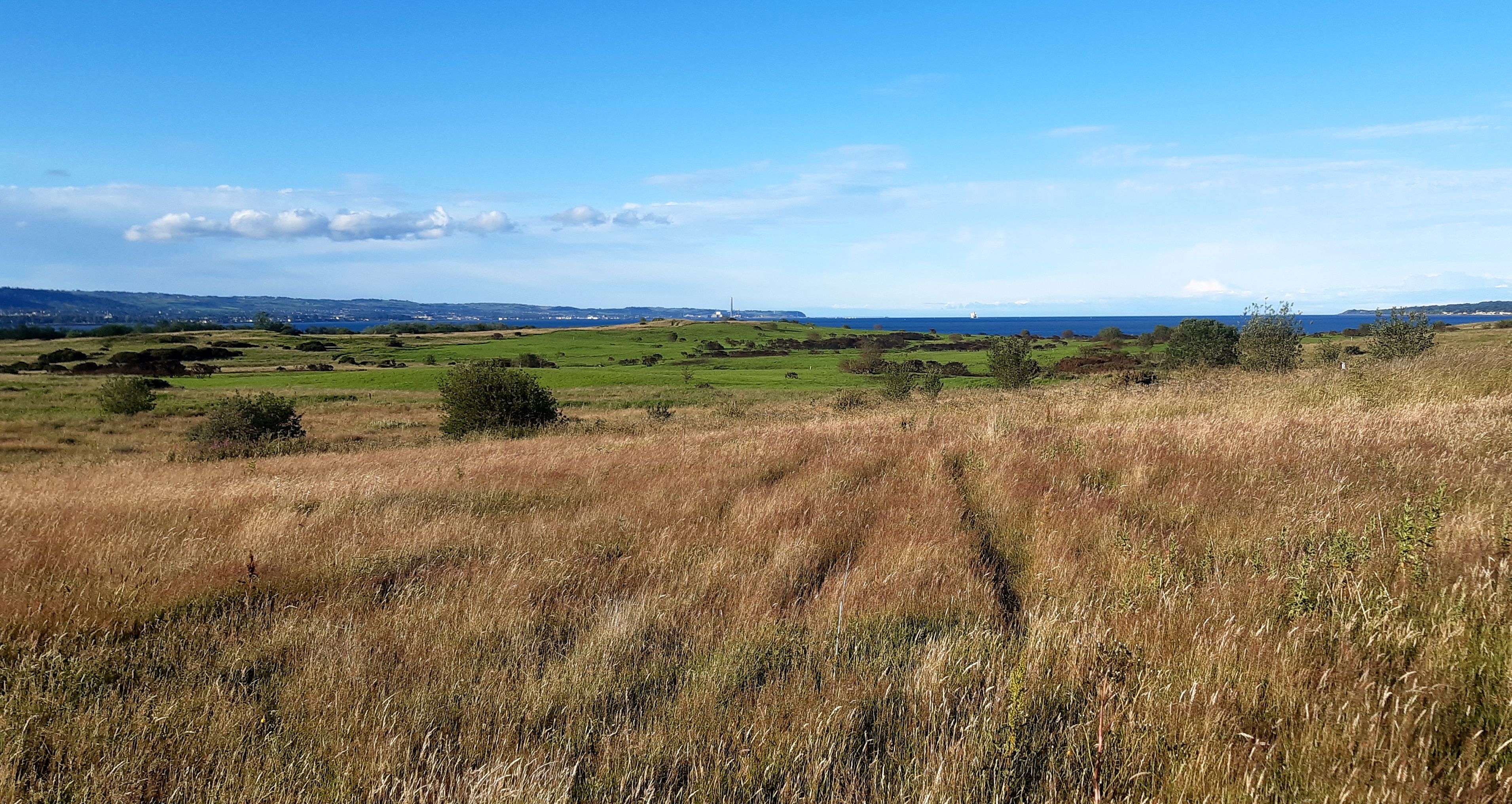THE lush green grass in the distance in this picture isn’t as pretty as it appears. No plant here is more than six weeks old – because that’s when a deadly blaze swept across it.
The long grass in the foreground was saved from the flames – and it’s here that an incredible variety of birds are breeding. The green in the distance might look like healthy plants, but they’re, literally, just green shoots.
It’s hard to believe that this rural landscape is actually in the heart of Belfast – this is Giant’s Park, an enormous area of land which was reclaimed from the sea. The vegetation hides the contents of Belfast bins emptied between 1973 and 2007. Dúlra well remembers the pre-wheelie bin days when binmen carried on their shoulders the old metal bin with its famous lid from your back yard. And, with most families much bigger than they are today, you wouldn’t want to see what was packed into them!
When Dúlra visited Giant’s Park on Saturday, it was obvious that the fire has had a profound effect on wildlife there. The blaze was extensive – even people in Crumlin smelt the smoke. But it was thanks to the heroics of 40 firefighters that the inferno didn’t spread across the whole site, which is the size of 100 football fields. In the end less than a fifth was damaged.
This week the birds still seemed spooked by the disaster. Even those which lived in the unaffected part had seen their lives thrown upside down as ‘refugees’ from the fire descended on them. Before the fire the birds would have divvied up the territory naturally, each pair with just the right amount of space to raise a family.
But suddenly the whole system was in turmoil.
As Dúlra dandered along, an army of birds chirped wildly over his head, more jittery than usual. By now there would be plenty of youngsters among the rushes and long grass, and the parents couldn’t afford any more mishaps.
Many of the birds that nest in the grass here are endangered. Skylarks are among the most threatened but lots of their nests with their precious cargo of eggs were incinerated. Nature, however, factors in such tragedies. The dispossessed families will have squeezed on to the land saved by the firefighters, built new nests and laid new clutches of eggs. With a bit of luck, they’ll manage to complete the cycle before summer’s end.

Thankfully, considering how often it’s rained since that heatwave six weeks ago, there’s no chance of another deadly fire.
The blaze hadn’t reached the reed bunting’s nest found by Dúlra earlier in May with its four eggs – but the local linnets weren’t so lucky. This wee finch nests in whin bushes – the most combustible of them all. Tragically, West Belfast bird expert Geordie Hynes found a linnet’s nest here with four eggs just 24 hours before the fire. Dúlra and Geordie had earlier found a goldfinch’s nest in a broom bush at the same spot – a particularly rich mini-haven at the centre of the park whose bushes and brambles acted like an oasis to wildlife. But on Saturday there wasn’t any sign of the broom and the mini-haven had obviously been smothered in flames.
But there, among the charred bramble branches, sat a sign of hope. A small bird that Dúlra had rarely encountered but one he knew immediately because it does what it says on the tin – a whitethroat – gilphíb (bright neck) in Irish. This warbler is very choosy about where it lives – it needs thickets and shrubbery – and it obviously wasn’t for giving up on the Giant’s Park.
For, as Dúlra steadied his binoculars, it hopped from burned branch to burned branch until it met another, fluffier bird – a chick. And Dúlra watched in wonder as it fed the next generation.
* If you’ve photographed or seen anything interesting, or have any nature questions, you can text Dúlra on 07801 414804.








